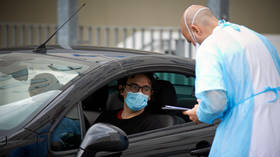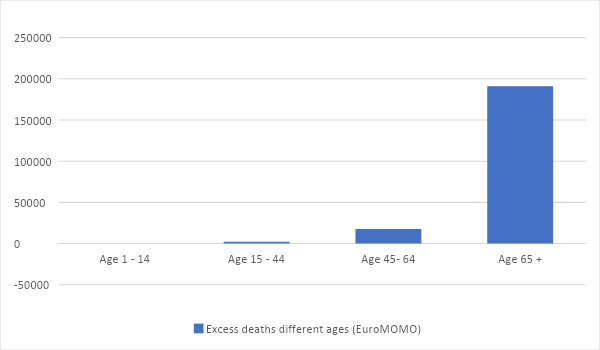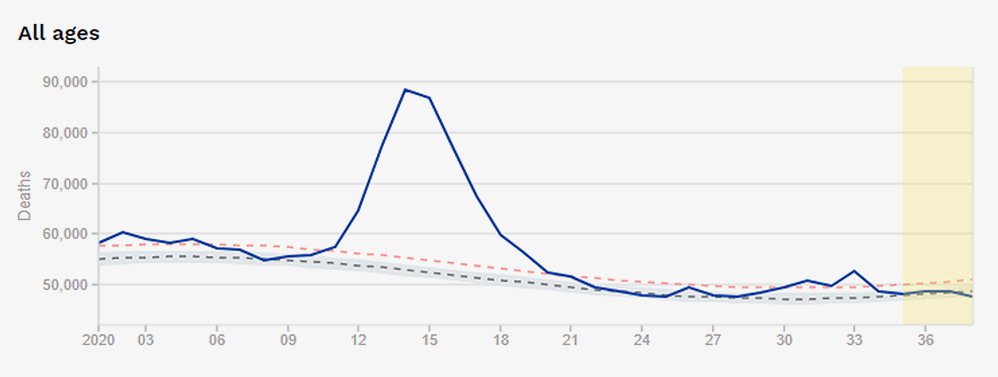Your chances of dying from Covid-19? If you’re healthy & under 65, a 40-mile daily commute by car is more likely to kill you

Yes, coronavirus is a serious infection for the elderly and vulnerable. But, for just about everyone else, it’s a relatively mild condition with a very low fatality rate. The only thing to fear is our overreaction to it.
In this piece, I intend to establish a reasonably accurate estimate for the risk of dying of Covid-19 for the average healthy person under the age of sixty-five.
If we go back to the start of the pandemic, most of the world locked down based on a prediction that the Infection Fatality Rate (IFR) of Covid-19 would be in the region of one per cent.
In the UK, the pandemic modellers at Imperial College London, the group with the greatest influence on Government policy, estimated the IFR at 0.9 percent. In short, they predicted that approximately one in a hundred people infected with the Sars-Cov2 virus would die.
Has this estimate proven accurate? If so, within a world population of between seven and eight billion, we would expect to suffer up to 76 million deaths. So far, there have been just over one million.
Having said this, no-one predicted that everyone could become infected. The Imperial College model suggested that about 80 percent of people would need to be infected before we reached ‘herd immunity.’ I prefer to call it community-wide immunity. We are not cattle.
Which means that we were not going to reach that figure of 76 million. Under this 80 percent model, we might expect to reach 61 million deaths (7.5bn x 0.8 x 0.1). Even with this reduced number, we are a long way short. How long might it take to get to 61 million?
At present, worldwide deaths are running at around 5,000 per day. At this rate, it would take 33 years to reach sixty million deaths. I am not certain what the time limitation is before a pandemic could be considered to have ended. I would imagine that 33 years might be stretching things a little far.
Perhaps a more important point to consider is this. Do we know how many people have been infected up to this point? If so, we can make a better guess at the likely IFR, and your risk of dying.
Dr Mike Ryan, the executive director of the World Health Organization’s health emergencies programme, recently stated the WHO has estimated that 750 million people have been infected worldwide.
If this is the case, calculating the current, rather than the estimated, IFR is pretty straightforward. You simply divide the one million deaths [1,034,068, to be fully accurate], by 750m.
1,034,068/750,000,000 = 0.138 percent.
Also on rt.com ‘A terribly difficult and lonely death’: WHO laments 1 million Covid-related deaths worldwide but says virus can be suppressedSo, an IFR of 0.138 percent. Which is significantly lower than the initially predicted one per cent. Or, to turn this figure around, according to the WHO figures, if you become infected with Covid-19, there is a one-in-750 chance you will die.
Of course, figures will vary from country to country. In Kenya, for example, the most recent attempt to estimate the IFR showed an exceptionally low rate. A study was done where antibodies for Sars-Cov2 were taken between April and June 2020. It was found that seroprevalence, the number of people showing antibodies, was 5.2 percent. (This will be an underestimate of true infection numbers, as many people do not create antibodies).
This represents an ‘infected’ population of just under three million (2,796,107), and there had been 71 deaths. Which provides an Infection Fatality Ratio of 0.00254 percent. This extremely low rate is, currently, unexplained.
On the other hand, the country with the highest overall death rate based on mortality per million is Peru. The total population of Peru is 32 million, and there have been just over 32,000 deaths. Which is a population fatality rate of almost exactly 0.1 percent. How many people have been infected in Peru in total? Uncertain. However, their IFR is going to end up in excess of 0.1 percent. Not everybody has yet been infected.
Why is there so much variation? This is currently unknown. Some people think that the indigenous population in Peru is at much higher risk than the surrounding ‘European’ population, due to genetic factors. However, let’s leave aside country-to-country and genetic variability for now. Overall, if you get infected, it looks as though the chance of dying currently stands at one in seventy hundred and fifty.
However, there is another enormously important factor at play here. Which is that, in almost all countries, Covid-19 is far more serious and deadly in the elderly population. Therefore, the average IFR doesn’t tell you much about your real risk. You need to factor in age.
For example, across most of Western Europe, if we look at excess mortality rates since the start of the epidemic, there have been just over two thousand more deaths than normal in those under the age of 45. These figures come from EuroMOMO, which gathers data from 24 European countries, with a combined population of 240 million (The UK is treated as four separate countries).
EuroMOMO describes its mission thus: ‘The overall objective of the original European Mortality Monitoring Project was to design a routine public health mortality monitoring system aimed at detecting and measuring, on a real-time basis, excess number of deaths related to influenza and other possible public health threats across participating European Countries.’
In those aged over 45, there have been more than 200,000 excess deaths. The figures from EuroMOMO in more detail are:
1-14 years = -15 deaths (minus 15)
15-44 years = 2,075
45 – 64 years = 17,826
65 – 74 years = 25,674
75 – 84 years = 65,982
85 + years = 98.069
So in all, for people aged 65-plus, there were 190,857 excess deaths.

Below is the EuroMOMO graph of all deaths across Europe on a week-by-week basis in 2020. As you can see there is a big rise in excess deaths, that started in late March and was finished by the middle of May. There was a further small blip in early September, which has now gone.

Essentially, if you are under 45 the risk of death (so far) has been 0.00158 percent or about one in 70,000. Over the age of 65 it is 0.17 percent. What is it for those with no significant underlying medical conditions? Much lower.
Leaving that issue aside, for those in the lower age range, even in those up to 65, the risk of death remains extremely low. The following statement comes from a paper written by three Stanford University doctors, entitled ‘Population-level COVID-19 mortality risk for non-elderly individuals overall and for non-elderly individuals without underlying diseases in pandemic epicenters’:
“People <65 years old have very small risks of COVID-19 death even in pandemic epicenters and deaths for people <65 years without underlying predisposing conditions are remarkably uncommon.”
As this paper went on to say, looking at Europe, and various US States:
“The COVID-19 mortality rate in people <65 years old during the period of fatalities from the epidemic was equivalent to the mortality rate from driving between 4 and 82 miles per day for 13 countries and 5 states.”
To put this another way, for healthy individuals under the age of 65, even during the peak weeks of the pandemic, a forty-mile commute was more likely to kill you than Covid-19 in most European countries and several US States.
Yes, for the elderly and vulnerable, Covid-19 is a serious infection, with an Infection Fatality Ratio significantly higher than most influenza epidemics. With the possible exceptions of 1957 and 1968, and leaving aside the flu pandemic of 1918-19 – which dwarfs everything else.
However, for the rest of the population, Covid-19 has proven to be a relatively mild condition with a very low fatality rate.
Think your friends would be interested? Share this story!
The statements, views and opinions expressed in this column are solely those of the author and do not necessarily represent those of RT.














